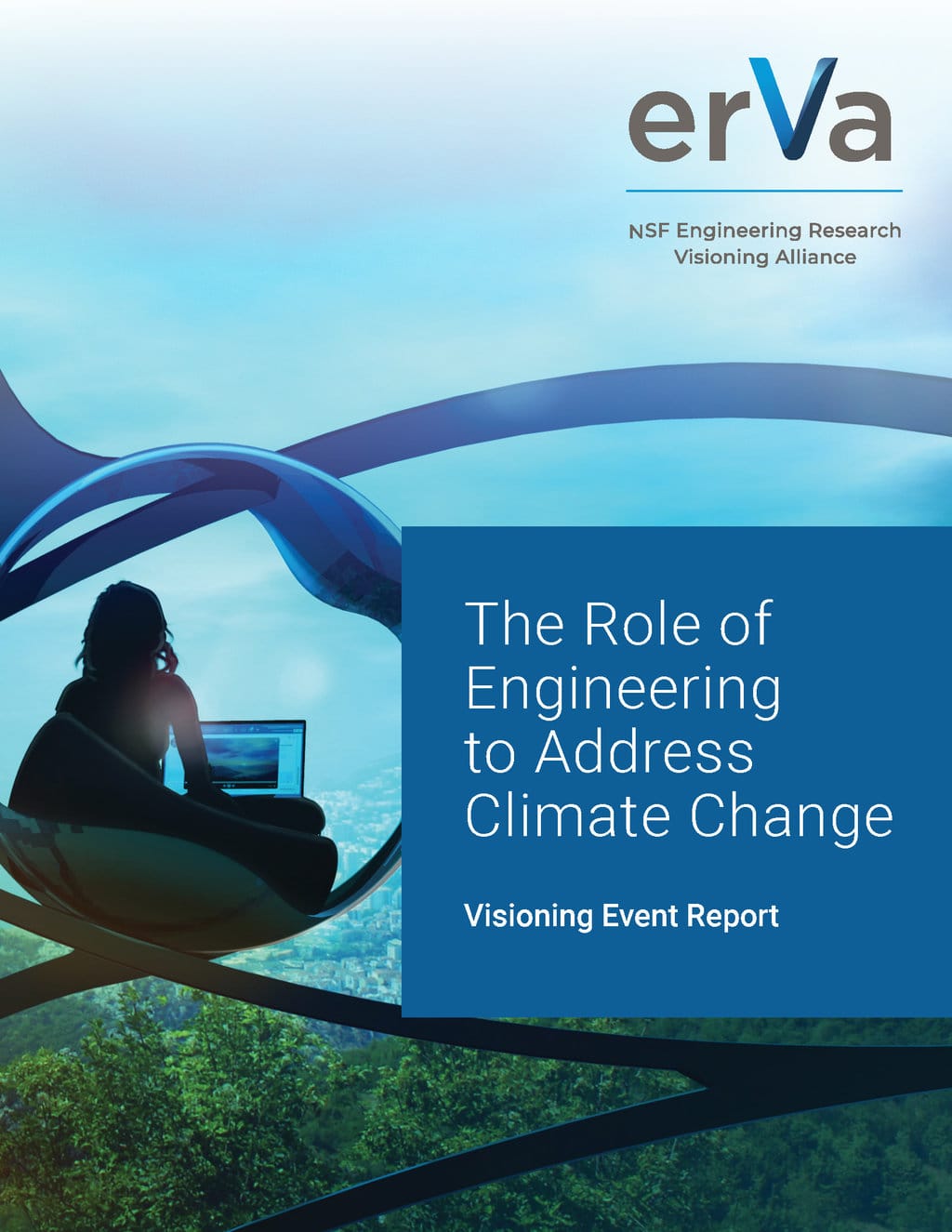Report: The Role of Engineering to Address Climate Change
The Engineering Research Visioning Alliance (ERVA), launched by NSF in April 2021, provides the engineering research community with a process for identifying bold and societally impactful engineering research directions that will place the United States in a leading position to realize a better future for all. For its inaugural visioning event, ERVA convened more than 100 experts from academia, industry, and government to identify priorities for engineering research that address one of the world’s most vexing challenges: climate change.
There are important ways to address climate change that do not require cutting-edge engineering research, but the ERVA report describes specific research directions through which engineering can take the lead and have impact. The aim is to inspire researchers and funders (public, private, and nonprofit) to support and pursue these priorities. ERVA challenges readers to disseminate this report and prioritize areas with potential for the greatest return on investment. Collaboration across the engineering community is needed now to seize opportunities to mitigate climate change and secure our future.
Watch the National Academies GUIRR Webinar
ERVA co-PI Anthony Boccanfuso and ERVA Thematic Task Force Co-Chair Bruce Logan presented the report findings during a Sept. 29, 2022 webinar for the National Academies of Science and Engineering's initiative, the Government University Industry Research Roundtable.
Energy Storage, Transmission, and Critical Materials
- Nanoengineered materials for critical mineral separation, extraction, and recycling;
- Chemicals or materials for non-traditional energy storage such as reversible electron shuttles in flow batteries and hydrogen gas;
- Materials for extracting additional energy from heat cycles by harvesting low-grade heat in new ways, such as thermal flow batteries and thermoelectrics; and
- Developing new ion exchange membranes to replace fluorinated membranes used in critical electrification systems, such as fuel cells and water electrolyzers and other separation systems, with non-PFAS (per- and polyfluoroalkyl substances)-based membranes with sufficient durability to withstand harsh conditions.
GREENHOUSE GAS (GHG) CAPTURE AND ELIMINATION
- Processes for capture and to eliminate methane and nitrous oxide in agriculture operations and the environment by focusing on high emission sites such as dams and water impoundments, mines, landfills, and farms;
- Researching bio- and genetic-engineering of plants or inclusive microbial communities for selective non-CO -based GHG capture (e.g., for methane and nitrous oxide); and
- Exploring the feasibility of intensive biotic ocean carbon capture to deep-sea sediments with a key area of preventing loss of nutrients, and electrochemical methods with a focus on devising materials suitable for challenging seawater conditions.
RESILIENT, ENERGY-EFFICIENT, AND HEALTHFUL INFRASTRUCTURE
- Developing low-cost coatings for buildings, roads, and infrastructure that reduce heat island effects, increase self-cooling, and thermal energy transmission back into the exosphere;
- Infrastructure engineering that demonstrates positive impacts on health arising from de-fossilizing/decarbonizing the energy infrastructure and reducing transportation, industrial, and power-plant emissions; and
- Extensive life cycle analyses, frameworks, or Environmental Product Declarations of embodied carbon in our infrastructure, ranging from the existing built environment to commonly used materials.
WATER, ECOSYSTEMS, AND GEOENGINEERING ASSESSMENT
- Sensing, measuring, and AI models for water flow analysis across large landscapes and proposing, through modeling and forecasting, future solutions to mitigate large swings in water availability due to increasingly disruptive events associated with climate change;
- Advancing solutions to threats of substantial losses of treated water in aging distribution systems through improved data collection and analytics, combined with novel in-line and self-powered sensing feeding forward into AI models; and
- Conceptualizing and testing at appropriate scales potential geoengineering solutions, with consideration of impacts on the environment and emphasis on economic and social costs of such technologies.
